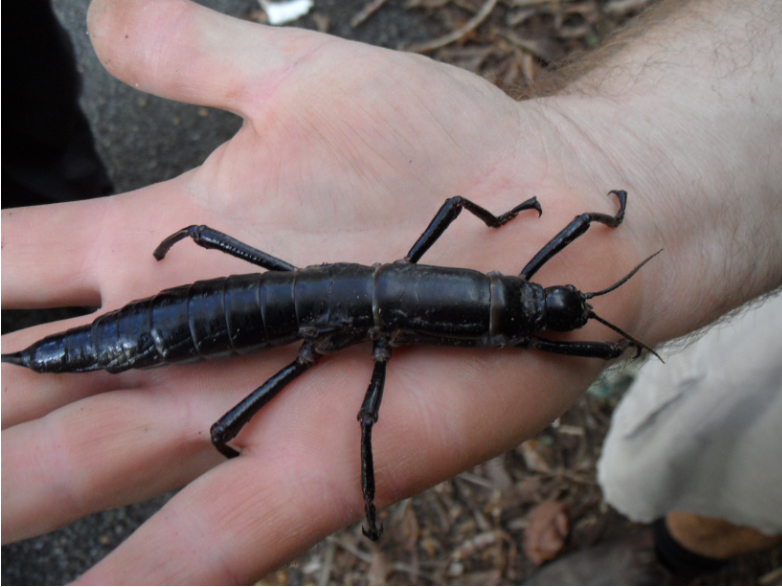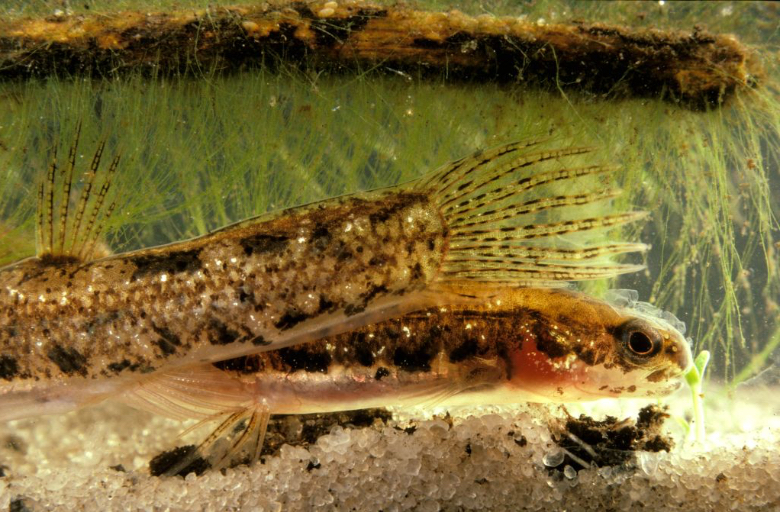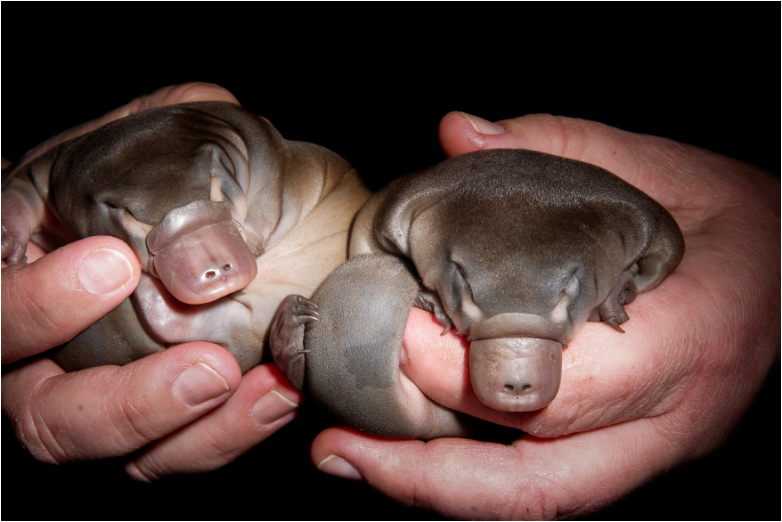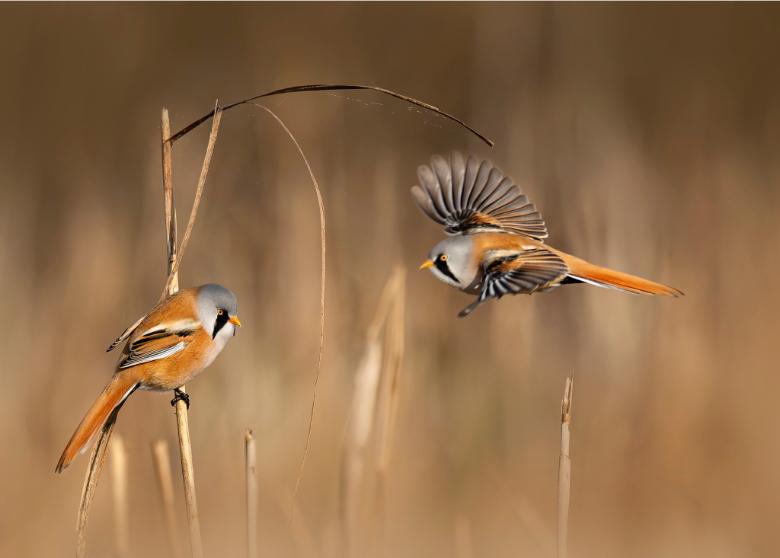There are some 400,000 species of beetles. One in three animal species is a beetle. Evolution has produced countless variations of the same type of creature, the order Coleoptera, and with enormous success. One of its genera, Agrilus, happens to contain the largest number of species in the entire animal kingdom, around 3,000, distributed all over the world. But unlike these thick branches of the tree of life, whose survival seems assured, there is the opposite case: species that are unique in their genus, family or order; they are the last of a branch that will disappear when they do, closing off an evolutionary line forever and completely. This makes them all the more precious and necessary to preserve. Here we look at some of them.

Only about 24 specimens of the enormous Lord Howe Island stick insect remain in the wild, all of them on a Pacific islet called Ball’s Pyramid. Credit: Granitethighs – CC BY-SA 3.0.
Lord Howe Island stick insect (Dryococelus australis)
It has been called the rarest insect in the world: only about 24 specimens of the enormous Lord Howe Island stick insect remain in the wild, all of them on a rugged Pacific islet called Ball’s Pyramid. This unique species used to inhabit the nearby Australian island of Lord Howe, but no live specimens have been sighted since 1920, after black rats arrived on board a ship two years earlier. It was declared extinct in 1986, but some climbers on Ball’s Pyramid were rumoured to have found remains. In 2001 the existence of this small population, which survives by eating a single type of plant, was confirmed. In 2003, four specimens were captured for breeding in zoos, and there are now several thousand in captivity. It is listed as critically endangered pending completion of a rat culling programme at Lord Howe for reintroduction of the insect.

The first representatives of the Ginkgo biloba, now extinct, date back to the Permian period, 290 million years ago. Credit: PATRICK HERTZOG/AFP via Getty Images.
Ginkgo biloba
The ginkgo, a tree that grows in the wild only in China, Korea and Japan but is cultivated in gardens all over the world, is a survivor: the only species in its genus (Ginkgo), family (Ginkgoaceae), order (Ginkgoales), class (Ginkgoopsida) and division (Ginkgophyta). But this was not always the case; the first representatives of this group, now extinct, date back to the Permian period, 290 million years ago, and in the Jurassic there were forests with at least a dozen different species of the genus, not to mention several other genera of the same family. Of that diversity, only one species has survived, which is often referred to as a “living fossil”—a controversial term—and is listed as endangered in the wild. Although popular as a dietary supplement, there is no solid evidence to support its purported health benefits.

The salamanderfish is not a lungfish, but resembles them in its ability to bury itself to survive in times of drought. Credit: Auscape/Universal Images Group via Getty Images.
Salamander fish (Lepidogalaxias salamandroides)
An extremely rare freshwater fish from Western Australia is the only living member of its genus, family, order and superorder. Named for its amphibian-like appearance, the salamanderfish is not a lungfish, but resembles them in its ability to bury itself to survive in times of drought, as it lives in seasonal ponds and streams. When it runs out of water, it breathes through its skin. Its origins date back 240 million years, when it diverged from the group that makes up the vast majority of modern fish. Since then, no other close relatives have been found in the fossil record. Its conservation status is listed as endangered.

The platypus is a semi-aquatic mammal with a duck’s bill, a beaver’s tail and otter’s feet, which lays eggs, senses electricity and is also venomous. Credit:: IainStych/ Istock/Getty Images.
Duck-billed platypus (Ornithorhynchus anatinus)
The appearance and characteristics of the famous platypus already suggest that it is one of a kind: a semi-aquatic mammal with a duck’s bill, a beaver’s tail and otter’s feet, which lays eggs, senses electricity and, thanks to the spurs on the hind legs of the male, is also venomous. But although this Australian animal is today the only representative of its genus and family, this was not always the case: two other extinct genera of the same family are known from the fossil record, with several species that lived millions of years ago in Australia and Patagonia in Argentina. Today, the closest living relatives of the platypus are the other family of monotremes, the echidnas. Despite its rarity, the platypus is only classified as near threatened.

The bearded reedling, which lives in temperate areas of Europe and Asia, is unique in its family, but its conservation status is good. Credit: Westend61/Getty Images.
Bearded reedling (Panurus biarmicus)
Like the platypus, there are many other relatively well-known species that have also ended up alone in their genus, such as the okapi (Okapia johnstoni) or the honey badger (Mellivora capensis), in their family, such as the aye-aye (Daubentonia madagascariensis) or the koala (Phascolarctos cinereus), or even in their order, such as the aardvark (Orycteropus afer) or the tuatara (Sphenodon punctatus), among others. These are all animals that we understand as looking odd. But stranger still is that this has happened to a bird of normal appearance: the bearded reedling, which lives in temperate areas of Europe and Asia, is unique in its family. It diverged from its closest relatives, the family Alaudidae, between 23 and 16 million years ago. The alaudids, or larks, now comprise about a hundred extant species in 21 genera, but the bearded reedling remains alone. Fortunately, its conservation status is good.

Humans remain alone, with too little genetic diversity for us to be divided into subspecies. Credit: Mario Tama/Getty Images.
Humans (Homo sapiens)
We cannot end this list without mentioning an enormously abundant species, unique in its genus. As far as we know, there were once about a dozen species of the genus Homo, but we remain alone, with too little genetic diversity for us to be divided into subspecies. Interestingly, we may have contributed to the demise of some of our cousins, as we have done for countless other species. And perhaps we will end up causing our own extinction as well.
Comments on this publication